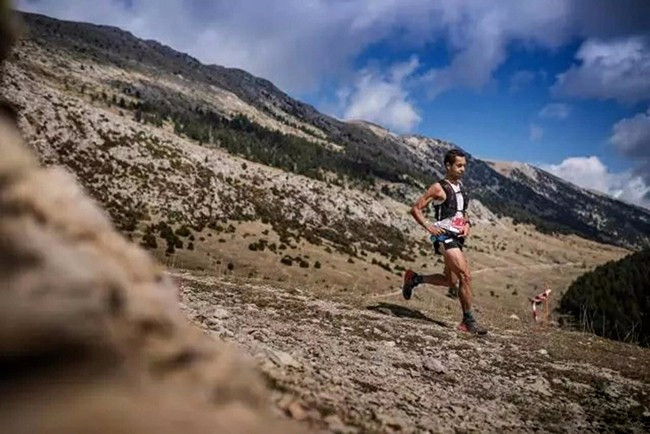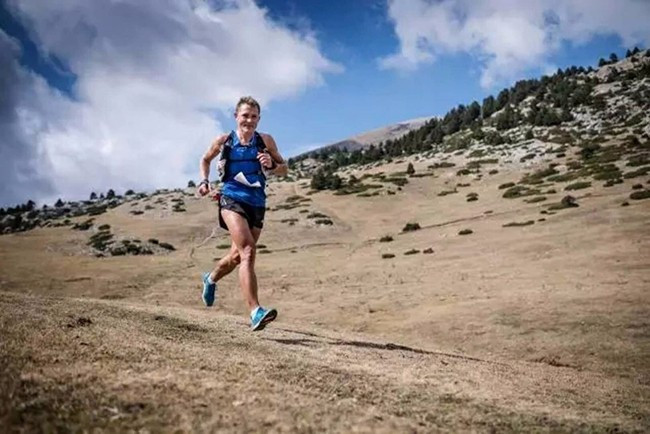For runners, "running volume" is an important indicator to assess the status of daily running training. Most people also think that if there is a high “running amount†every month, it usually means that the training level is higher and it should be achieved in various competitions.
Indeed, the “running volume†(which can be simply understood as the “distance to complete the running exerciseâ€) that can be successfully completed every month is an important indicator to assess the training status, but it cannot simply put the “running capacity†and the competition ability or entry results. Associated.
In fact, running runners who have higher running capacity do not necessarily perform better than those who run relatively less.
Let's first understand what "run amount" really represents.
As mentioned above, "running volume" can be simply understood as the distance to complete the running exercise within a certain period of time. We are used to describing the amount of monthly running, and many people use the amount of annual running to measure. At the same time, there are people who like to describe the distance of running training completed during the entire preparation period for a certain game.
The running distance is a kinematic indicator. Similarly, kinematics has other indicators for evaluating the state of running training, such as speed (speed), pitch, pace, and training time. From this it can be seen that "running volume" is just one of many indicators for evaluating the state of training.
Although the “running volume†indicator is very important, it is not yet possible to accurately assess the training level and status through this indicator, and it needs to be combined with other indicators. In other words, if you want to improve your athletic performance, you can't do it by simply increasing your running volume.
Runners want to improve the level of running and competition results, there are many dimensions can be used as a reference, such as: kinematic indicators, biological indicators, psychological factors, environmental adaptation and so on. We focus here on the "running volume" problem. Let's do some analysis from the perspective of kinematics.
Whether you are participating in a marathon or cross-country race, there is a fixed distance, and the final result depends on the time (distance/time, speed) used to complete the game. The faster the speed, the better the performance will be. So, from a kinematic point of view, what determines speed? There are only two factors: stride and pitch.
To improve the performance of the game, you need to consider the two factors of pace and pace, that is, how to get a bigger stride or a faster stride, or both. Well, we can use this law to think about the impact of increasing the "running volume" on "step frequency" and "step".
Obviously, as we push backwards, we will find that the effect of “running volume†on performance improvement is difficult to describe simply. Below, let us use some kinematic indicators to analyze the "running volume" and analyze "monthly running volume" as an example.
First of all, we need to list a few issues related to the amount of running
What is the total monthly running volume?
Second, what is the distribution plan?
Note: Taking 300 kilometers per month as an example, is to complete 10 kilometers per day? Or is it 20 kilometers completed the next day? Or does it change regularly, with a fixed long distance of two weeks or once a month? Are other runnings regularly distributed in each week? Is it done in a single exercise or multiple times each day?
Third, how much is the average speed?
4. What are the changes in pace and pace at different speeds?
Fifth, fatigue and recovery?
After these issues have been identified, we can further analyze and discuss the "running volume" for these five issues.
Total monthly run
This word is familiar to the majority of runners. It represents a fixed amount of training every month and is an important indicator of the status of training. If the monthly run increases, it is generally considered that the running ability is increasing.
However, as mentioned in the previous article, the "total run" is important but not comprehensive. The amount of running is just an indicator to evaluate the amount of training. In addition to "quantity", it is more necessary to evaluate the status of training. There is also a "quality", that is, the proportion of effective training amount in the total training amount.
For marathons or cross-country races, effective training is mainly aimed at training distances that are close to the target speed of the competition (generally 80 to 120% of the target speed of the competition).
There is a lot of statistics-based research on the "total running volume." It is generally believed that the increase in "running volume" should be within a certain range. Generally recommended for this range is that the monthly running volume does not increase by more than 10-20% of the previous month. .
However, this category also varies from person to person. The initial increase in the number of enthusiasts who have just started to engage in running exercises may be slightly larger, while the increase in the amount of running for amateurs who train relatively systematically is much smaller, and there is an upper limit. It cannot be increased indefinitely.
The limits of running capacity must consider two factors: one is the goal of the game to be prepared; the other is more important, that is, the physical response, mainly to see the recovery of fatigue.
Distribution of running volume
Regarding the distribution of running capacity, we still use the monthly mileage of 300 kilometers as an example.
From the amount of monthly running, you can only see that the total running distance is 300 kilometers. There are many ways to accumulate 300 kilometers of total running capacity in a month. Here are two extreme examples:
Run 10 times a day (or run 10 groups), each time 1 kilometer, 30 days total run is 300 kilometers;
Participate in a 300-kilometer training session. Do not practice at other times and run 300 kilometers.
In terms of total running volume, these two models all have a monthly run of 300 kilometers, but the practice method is completely different. The effect is completely different.
However, for most runners, the above two examples are difficult to appear in peacetime training. Usually we have two modes of running training:
The first is to promote health or stress reduction. Often using a fixed distance running exercise. Each running exercise uses similar or same distances, such as 3 km, 5 km, or 10 km;
The second goal is to improve performance. This training is not the same distance each time, sometimes the distance will be short, such as practicing interval running (or the so-called rhythm run), 10 groups of 400 meters to run, or 6 groups of 1 km to run, the practice distance is only 4-6 kilometers; Sometimes the distance increases significantly. For example, if you are practicing LSD on a stationary playground or in a mountainous area, the running distance will often exceed 20 kilometers.
In fact, no matter which of the above two modes you are used to, you need to pay attention to two issues: one is to match the training goal and work and rest; the other is to establish a relatively stable rhythm for training, and each time is relatively fixed. The running arrangement arranges running practice time regularly according to body and work and living habits.
As for the distribution of running volume, most runners will always insist on their own training habits. On the issue of "a few days of running a week", some people run for 4 days a week, and others do not fall for a day.
Relatively speaking, running 4-5 days a week is a good arrangement to prepare for a 50 km class game. However, it is strongly recommended that everyone should arrange a rest day at least once a week to give the body a recovery process.
For people aiming at marathon or long-distance cross-country races, the longest distance for a single exercise is often more meaningful than the total running volume.
Average speed
The amount of running represents the distance we train, and the other indicator cannot be ignored. It is speed. This is the time it takes to complete the total run. Although there are multiple indicators for assessing training status, in short, if the average time to complete the total running is shorter (faster average), it is generally considered that running ability is increasing.
However, even a person who does not like the marathon to focus on cross-country running should also pay attention to speed. The goal of speed training is to increase the maximum aerobic capacity (ie, maximum oxygen uptake). Studies have shown that speed training can increase the body's energy release from energy stores, improve lactic acid metabolism, produce stronger stimuli, and train fast muscle fibers. In this way, the ability to absorb oxygen from the blood to supply muscles to maintain high-intensity exercise is enhanced.
Our body can easily adapt to the training content that we engage in during the regular period, and at the same time, the efficiency will be lower and lower. Therefore, many times we need to stimulate the body differently. â€
At the same time, it is worth noting that the average speed of finished running does not provide a more accurate assessment of your athletic ability. Because the average speed will be affected by the training plan arrangement. For example, one is to run at a higher speed at a constant speed, and the other is to use LSD in combination with a high-intensity interval practice. The average speed of these two training methods may be the same, but the purpose of training is completely different. We need to make specific analysis based on circumstances, and we cannot simply make comparisons.
To evaluate whether the speed of running training is appropriate, it is a good method to observe whether the fatigue caused by running can be restored before the next day or the next practice. If fatigue can be restored before the next practice, it means that the speed is appropriate.
Pace and stride changes at different speeds
When running at different speeds, whether there is a corresponding change in pace and cadence is also an important reference factor for evaluating training status.
If the pace is increased and the pace is increased, it can be considered that the ability is improved, but the significance of the increase in step frequency and stride is still different.
In general, the increase in pace is related to factors such as muscle strength, muscular endurance, and flexibility; the increase in the frequency of the step is related to factors such as changes in technical movements and neuromuscular control ability.
When exercise occurs because of fatigue, the difference in pace and pace also indicates the limiting factors that cause fatigue, which can help us better analyze and restore fatigue.
Fatigue and recovery
Fatigue and recovery during training are important factors in assessing running volume.
Physical fatigue caused by training is a normal phenomenon, but the training program must consider the ability to recover from fatigue.
Only when the body is fully restored can it be better to improve the ability to run through training. What is more important is to be safer and avoid sports injuries caused by fatigue.
"Running volume" is an important indicator for assessing training status, but "quality" is more important than "quantity", and effective "running volume" needs to be combined with reasonable training arrangements. Running friends can combine the above 5 points to assess their own training status through running, so as to achieve the purpose of improving athletic ability.
Cream Blush
Features: It's high quality and high pigment cream blush. It's vegan and cruelty free. We don't do animal test when make products.
Usage: Dip a little blush with your fingers or sponge egg, then apply it on your cheeck. It can be used for daily makeup to make you look refreshed.
Advantages: Our company is a comprehensive cosmetics enterprise integrating research,development production, sales and service, which is a professional manufacturer of cosmetics. We provide custom service. We can customize your colors and logo. Making high quality products is our aim.
Delivery: It would take around 15-20 days to finish the custom products after we confirm the order.
It would take around 7-10 days to finish the products which don't need to be customed.
Payment: We can accept the payment through T/T ($25 extra for each payment).


custoom blush,liquid blush,makeup blush,hot selling blush
Suzhou Yimeijia368 Biological Technology Co.,Ltd. , https://www.ymjbeauty.com














